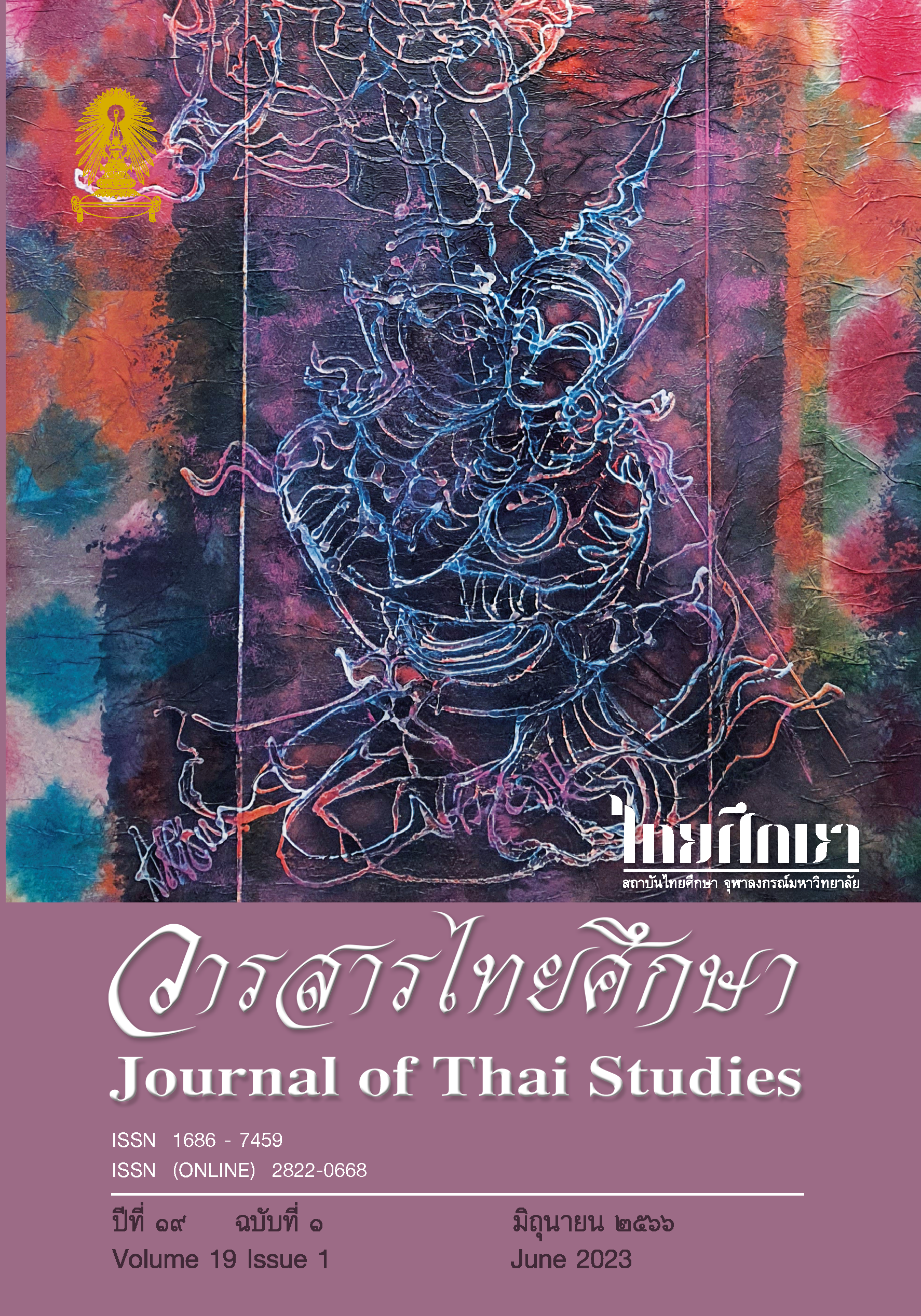Word stress in Thai coordinate and subordinate compounds
Main Article Content
Abstract
This study investigated word stress in Thai coordinate and subordinate compounds. Coordinate and subordinate compounds in Thai are hypothesized to exhibit the same word stress patterns depending on their semantic compositionality, including primary-primary stress in coordinate and subordinate compounds with high compositionality and secondary-primary stress in compounds with low compositionality. The results of this study confirm both hypotheses.
Downloads
Article Details

This work is licensed under a Creative Commons Attribution-NonCommercial-NoDerivatives 4.0 International License.
Journal of Thai studies is licensed under a Creative Commons Attribution-Noncommercial-NoDerivatives4.0 Intenational (CC BY-NC-ND 4.0) licence, unless otherwise stated. Plese read our Policies page for more information on Open Access, copyright and permissions.
References
Bauer, L. (2003). Introducing Linguistic Morphology. Edinburgh: Edinburgh
University Press.
Bennett, J. (1995). Metrical foot structure in Thai and Kayah Li: Optimalitytheoretic
studies in the prosody of two southeast Asian languages.(Doctoral dissertation). University of Illinois at Urbana-Champaign,
Illinois, USA.
Bisetto, A., & Scalise, S. (2005). The classification of compounds. Lingue e
linguaggio, 4(2), 319-310.
Boersma, P. (2001). Praat, a system for doing phonetics by computer.
Glot. Int., 5(9), 341-345.
Connelly, L. (2008). Pilot studies. Medsurg nursing, 17(6), 411.
Haspelmath, M. (2002). Understanding Morphology. London: Arnold.
Iangubol, A. (1982). An Analytical study of Compound Words in Thai.
(Master’s thesis). Chulalongkorn University, Bangkok, Thailand.
Injan, A. (2014). Coordinate Compounds in Thai. (Masters’s thesis).
Chulalongkorn University, Bangkok, Thailand.
Intorn, D. (1976). Construction of a Thai programmed lesson on “compound
words” for mathayom suksa one. (Master’s thesis). Chulalongkorn
University, Bangkok, Thailand.
Kaewkhieo, Y. (2008). A comparative study of compound words in Standard
Thai and Northern Thai Dialect. Journal of Thai Language and
Thai Culture, 2(3), 139-152.
L-Thongkum, T. (2011). Siang phasathai kansueksa thang kon satthasat
[Thai Sounds: An Acoustic Study]. Bangkok: Chulalongkorn University
Press.
Maluleem, L. (2018). Compound stress in Thai and effect of compositionality
in Papers from the Chulalongkorn International Student Symposium
on Southeast Asian Linguistics 2017. Journal of the Southeast
Asian Linguistics Society, 11(3), 68-77.
Naksakul, K. (1981). Rabop siang phasa thai [Thai phonological systems].
(5 ed.). Bangkok: Chulalongkorn University Press.
Nitisaroj, R. (2004). Perception of stress in Thai. The Journal of the Acoustical
Society of America, 116(4), 2645-2645.
Pelletier, F. (1994). The principle of semantic compositionality. Topoi, 13(1),
-24.
Peyasantiwong, P. (1986). Stress in Thai. Paper presented at the Papers from
a Conference on Thai Studies in Honor of William J. Gedney. Michigan Papers on South and Southeast Asia, Center for South and Southeast Asian Studies, University of Michigan, Ann Arbor.
Potisuk, S., Gandour, J., & Harper, M. (1996). Acoustic correlates of stress in
Thai. Phonetica, 53(4), 200-220.
Singnoi, A. (2005). Kham nam prasom : sat lae sin nai kan sang kham thai
[Compound Nouns: Sciences and Arts in Thai Word Formation].Bangkok: Chulalongkorn University Press.
Treece, E., & Treece, J. (1982). Elements of research in nursing. edition 3.
St. Louis: Mosby.


